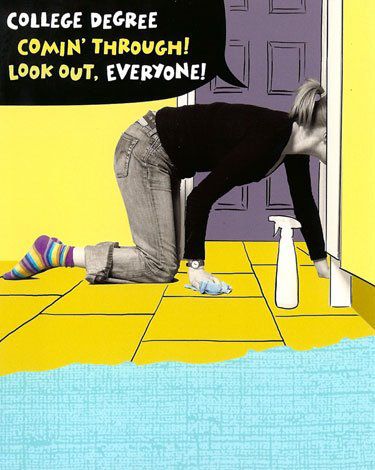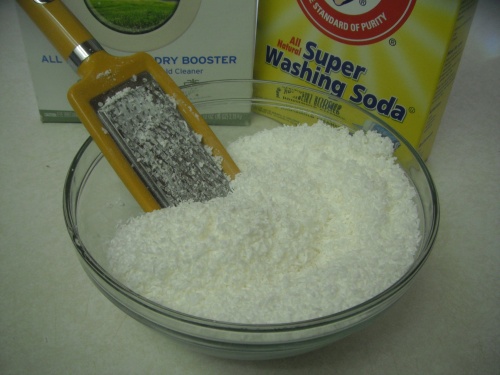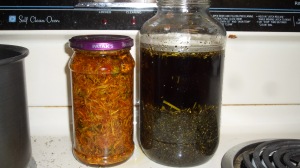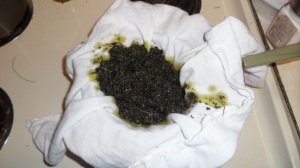Ok so I have been thinking a lot about our budget lately, and looking at the “average” budgets most others have. I am trying to figure out where people get their numbers! Comparing our budget for a 3.5 person house to the national average is eye-opening.
Where we spend:
Food
We spend 18% of our income on food. We do this because it costs more money to eat organic whole foods. There is really no getting around that. By increasing the quality of what we eat we save in other areas of our life. My husband was missing a lot of work because of health problems before switching our diet. He is out of work 3-5 days less a month than he was before the switch saving us his PTO time and the salary cut he had to take when he ran out of PTO.
We spend less on doctors visits because of our diet changes as well.
Healthcare
Our insurance is subsidized through Mikes work, so we “only” pay about $400 a month for insurance. We do get the good insurance though (an extra $60 a month) so we can take advantage of the alternative care. I get masages almost every week for prenatal/post natal care and health maintenance. Mike and I take full advantage of the Chiropractor/Acupuncture benefits as well. I wish I could say we used a Natropath instead of a MD but there are no ND’s in our area who accept insurance and we don’t have the money to pay out-of-pocket and hope for reimbursement from the insurance company. I have found a holistic MD that I think I like though. We have a FSA so our co-pays are at least paid with tax-free money. It is helping a lot too with the hospital and midwife payments for the pregnancy. Too bad they are changing the way FSAs work starting next year due to the new health care legislation. Maybe we will get lucky and our insurance rates will drop?
Where we save:
Cleaning products
We have made our last big market cleaning product purchase. From here on out we make our own house hold cleaners, bathroom cleaners, kitchen cleaners, laundry detergent AND dish washer soap! I am terrified of the dish washer soap, that is one we have not switched yet I just stocked up on my favorite out of fear, but when we run out I am making our own! Mark my words! Instead of spending an average of $30 a month on cleaning products we will be spending an average of $14 about every 3 months on vinegar, baking soda, borax, and Dr. Bonner’s soap.
By switching to home-made, natural cleaning products we not only reduce our cost of living but also reduce our families exposure to many carcinogenic, teteratogenic, and mutinogenic chemicals lurking in our home.
Personal care products
I make our personal care products. I have been using the Oil Cleansing Method on my face which has been FABULOUS and cleared my skin right up. More on that later. I make my own body lotion and oils, bath salts, diaper salve, eczema salve, deodorant, and have been “poo free” for 2 months now. Yes I still bathe daily but use baking soda and apple cider vinegar for my hair instead of shampoo and conditioner. My hair looks and feels great by the way! We buy hand-made goats milk bar soap from farmers markets and craft fairs for soap, which feels so decadent to me. I love it! I used to spend about $40 on personal care items, not including makeup, which cost me another $20-30 a month.
By simplifying our personal care products, and knowing exactly what is going onto my family’s body we can better control the toxins we expose our selves to. I am not sure the accuracy of this statement BUT the herbalist I worked with in Spokane mentioned that 40% of what we put onto our skin is absorbed into our body and blood stream. The skin is the largest organ on the body after all. If you could reduce your risk simply enough wouldn’t you? More on the health benefits of cleaning up your personal care products here.
Housing expenses
We live in a smaller than necessary apartment and keep the heater between 62 and 65* on a day-to-day basis. We turn down the heat and turn off the lights when we leave the house. Our light bulbs are all CFL’s which save a lot of power usage and our water heater is at 120* unless I am tackling some stubborn diapers. We spend an average of 19% of our income on our housing expenses when the average family is at 34%. (Note that is not including the cost of our home in Spokane, which is a rental and netting $0 profit or loss at the moment).
Baby products
We cloth diaper almost all of the time. Ellie gets a rash at night, or wakes up wet in cloth so she sleeps in sposies almost every night. Other than that though we cloth diaper. If we were buying her disposables at the rate we change diapers and in the brand we use that does not cause her rashes, we would be spending an average of $90 a month, which would end up being about 1,080 a year. In Ellie’s first year of life we spent $320 on cloth diapers (that includes the very generous gift of my wonderful sister for Ellie’s baby shower), and I just bought some new-born diapers for when #2 comes for an additional $200. We are now over supplied with diapers and I will probably sell off some of my extras once we see how well we go through what we have. I spend $12 every 3-4 months on laundry detergent and the water/electric cost really is minimal with the washer and dryer, especially since we line dry during the summer. So we can call that a $59 a month savings on cloth diapering in the first year, and more for the second year into potty training, especially since half of year 2 will be spent diapering 2 kids! Good planning on our part.
And really what is cuter than a kiddo in a cloth diaper. Yeah she posed for this.
By cloth diapering we are reducing our child’s exposure to the toxic chemicals in children’s diapers. Ellie rarely gets diaper rash or yeast infections like a lot of babies I know who use disposables. I think once parents get over the learning curve of cloth diapering they will truly appreciate the health and financial benefits.
Breast Feeding
Ellie was exclusively breast fed for 6 months and is still breast fed to this day. She does not get cows milk when she is not nursing, she gets water. This saved us $1,733.75 in her first year of life alone (according to these calculations done with numbers from 2007). This is not including the cost of Organic Whole Milk we would have switched to afterward.
This cost is also not including the fact that miss Ellie has very rarely been sick enough to take to the doctor. Here is a good article about the benefits of BFing and some great links to scientific articles.
Clothes
We rarely buy new clothes for our selves, but when we do we buy quality. We never buy brand new clothes for our child unless they are on serious discount. It just seems like a waste of money for something she will grow out of quickly or destroy while playing. My MIL does buy her a new wardrobe at least twice a year because shopping for little girls is so fun. My savings tip: do not buy small children new clothes, they don’t need new clothes (unless it is a special occasion) nor do they care if they have new clothes. Let them be a little rough and tumble, creative and artsy, and have fun without worrying about staining or tearing. It will make your life much less stressful.
This is why we don’t need to destroy new clothes.
How is this green? Re-use baby , re-use!
Transportation/vehicle expenses
We have 1 car. It is 10 years old and well maintained, most days. We own the car outright and have no monthly payments. Maintenance cost (including the big repairs spread out over the year) average about $80 a month. We spend about $80 a month on gas if I am driving a lot. We live 5 miles away from Mike’s work and he bikes to work as weather permits, which is about 9 months out of the year. The rest of the time I give him a ride to and from work or he carpools. Bike maintenance is about $10 a month. Insurance cost is about $60 a month. That makes our transportation cost $230 a month, about 4.6% of our budget. The average American household spends 16% of their household income on transportation. It pays to drive an old car with decent mileage and only have 1 car if your situation allows.
By only driving one car we reduce our emissions by half, our gas usage by half, and our 10 year old car is just as fuel efficient as a car of the same size made this year.
I could go on about how we save “being green” but I would love to know how you save? What are your tricks to benefiting your family and your environment by “being green”? I find the changes we have made help us support our expensive food habit and make our life much more enjoyable. I would love to hear your experiences.
Shared on Frugal Days, Sustainable Ways, and Our Simple Farm’s Simple Living Wednesday.






























 Essential Oils
Essential Oils